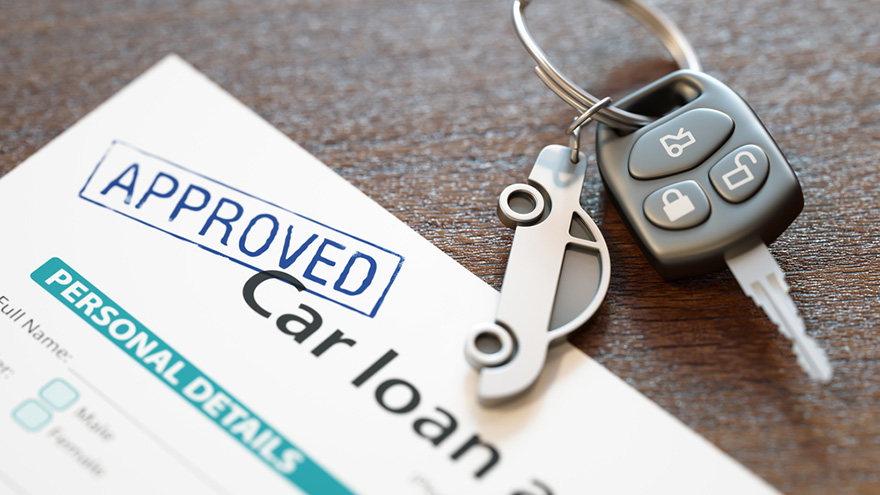Fitch Ratings is a bit more upbeat about the direction of the auto lease asset backed securities market.
Analysts expect stability in residual value realizations throughout the year, prompting them to revise their wholesale market outlook haircut to neutral from negative for most auto lease asset backed securities (ABS). Despite a 16% jump in auto lease ABS return volume this year, Fitch Ratings explained in a news release that residual values are recording mostly gains across auto lease ABS going into summer.
Fitch Ratings also acknowledged the revision was driven by stronger than expected residual-value performance buoyed by plateauing lease returns expectations, slowing new-vehicle sales, favorable vehicle-return mix and strong demand for the affordability of used vehicles.
Against a backdrop of Fitch’s cautious U.S. economic outlook, Fitch’s outlook on auto lease asset performance is stable for 2019, while the ratings outlook remains positive for subordinate tranches. The revision to neutral from negative is expected to have a limited effect on Fitch expected residual loss levels for rated auto lease ABS tranches.
Analysts explained the wholesale market outlook haircut is just one of five qualitative haircuts that collectively lead to a 15%-25% haircut to Fitch’s base case residual value loss proxies. Further, Fitch’s through-the-cycle residual value loss proxy approach incorporates the most stressed 2008-2009 RV loss performance, which was most stressful for light trucks and SUVs, and results in lease ABS loss coverage levels of 27%-34% for all transactions.
Fitch pointed out that it applied a negative assessment to the wholesale market outlook haircut to all auto lease ABS from 2014 to 2018, reflecting swelling supply and the resultant expectations of downward pressure on residual values. Fitch’s ABS residual value index has seen steady residual maturities, which have not moved far from the peak of $7.4 billion in 2016.
“However, residual values have been stronger than forecast even with mounting vehicle supply, and the used vehicle market continues to absorb record return volumes,” analysts said.
Fitch recapped that its residual value index dipped briefly into nominally low-single digit losses at the end 2016. Today, analysts emphasized that demand for used vehicles remains healthy, with Fitch’s index reporting residual gains of 3.12% as of first-quarter 2019, slightly improved over 2.88% in first-quarter 2018.
Fitch’s residual value ABS index is expected to see lease return volumes peak in 2019 at $8.8 billion up from $7.3 billion in 2018. However, analysts acknowledged residual returns will then have plateaued and Fitch expects a 9% decline in lease maturities in 2020.
“Further, Fitch’s residual maturity expectations are conservatively projected using elevated return assumptions, while actual returns over the last four years have represented 88% of these expectations,” analysts said.
New-vehicle lease penetration was flat at roughly 30% through April, according to Black Book, consistent with a year earlier. Fitch is projecting lease volumes underwritten to decline, given a flat-to-lower sales forecast in 2019, and less demand for leases.
“New-vehicle sales have moderated with the slowing U.S. economy and many manufacturers pulled back on incentives in an effort to align production levels with demand,” said analysts, who are predicting new-vehicle sales of 16.9 million units in 2019, down from 17.3 million recorded in 2018.
Fitch mentioned the strong popularity of new and redesigned SUVs and CUVs resulted in high exposures to these vehicles in 2016 through 2019 vintage ABS transactions. These vehicles comprised an average of 57% of ABS pools in 2017, versus 47% in 2016 and 40% in 2015.
“This trend shows no signs of abating as manufacturers alter lineups to satisfy demand,” analysts said.
“However, these bigger vehicles are expensive and overall new vehicle prices rose significantly to around $33,000, on average currently, according to Black Book,” analysts continued. “This, along with the cost of financing purchases as interest rates rose marginally, shifted consumers to more affordable used vehicles, bolstering residual values.
“Further, smaller cars benefitted as affordability becomes a concern, and most of these vehicles have seen values rebound in late 2018 into 2019, as supply was tight while demand rose off record lows,” Fitch went on to say.
“In addition, as the U.S. economy enters its 10th year of expansion, late cycle macroeconomic concerns mount, and the used-vehicle market becomes more attractive as credit tightens,” the firm added.
Vision Dealer Solutions went to academia to solve complicated computations finance offices regularly face.
The provider that offers VisionMenu, in collaboration with Purdue University Fort Wayne, released a lease payment solver that officials said this week will essentially reverse-engineer the setups for lease calculations with any dealer management system (DMS).
“Four years ago, we approached Purdue Fort Wayne’s mathematics department and its Center for Applied Mathematics and Statistics (CAMS) to help us solve a problem with matching lease calculations at auto dealerships,” VisionMenu president Ron Martin said in a news release.
“At the time, we had no idea what a chronic problem it was for dealerships that needed to match their DMS payments when using a third-party application,” Martin continued.
The process began as a research project to manually match the payment of the dealerships that used the Vision Dealer Solutions finance menu tool. After hundreds of test cases, the CAMS team discovered a pattern to the results, which launched the “Lease Payment Solver” project.
Officials indicated the tool now allows the user to get “penny-perfect” payments for vehicle leasing scenarios, regardless of the dealer’s management system. Martin said the company will use the tool for its proprietary purposes at first, but added they expect to share the technology with other third-party applications in the future.
Peter Dragnev, professor and chair of the university’s department of mathematical sciences, is co-director of the CAMS team that found the solution.
“Working with VisionMenu Inc. on the project was quite a rewarding experience for us,” Dragnev said.
Other members of CAMS team that worked on the solution include Jeff Anderson, co-director and professor of mathematics, and Dan Corian, associate professor of mathematics.
The auto-finance industry passed another milestone as Equifax determined current portfolios collectively now exceed $1.25 trillion.
However, subprime paper isn’t pushing the industry-wide figure higher as much as volume within that segment did a year ago.
To get to the $1.27 trillion overall figure reported as of May, Equifax indicated dealerships and finance companies generated 10.2 million contracts, totaling $230.6 billion, through the first five months of this year. Those figures represented increases of 1.1 percent and 3.2 percent, respectively.
Equifax pointed out that retail installment contracts constituted 85.9 percent of all originations and 89.4 percent of all new balances booked through May. More details on vehicle leasing in a moment.
Analysts drilled deeper and found that 2.33 million contracts were originated through May to consumers with a VantageScore 3.0 credit score below 620, generally considered subprime accounts. That volume marked a 2.5-percent decline year-over-year.
That newly originated subprime paper had a corresponding total balance of $41.7 billion; a 1.8 percent decrease year-over-year, according to Equifax.
Through May, Equifax determined that 22.8 percent of retail installment contracts were issued to consumers with a subprime credit score, and they accounted for 18.1 percent of origination balances. By that juncture a year ago, analysts pegged the subprime account share at 23.7 percent and balance share at 19.0 percent.
Equifax also mentioned the average amount finance for all contracts originated in May came in at $22,946, a 2.5-percent lift year-over-year. The average amount financed in a subprime deal ticked up just 0.82 percent year-over-year, settling at $18,306.
“As further evidence of the strong automotive market that has been present ever since the end of the recession, total outstanding auto portfolio balances have now eclipsed the one-and one-quarter mark, reaching 1.27 trillion,” said Gunnar Blix, deputy chief economist for Equifax.
“While total originations are down slightly from the previous two years, clearly the solid economy continues to make shoppers comfortable in absorbing not only higher prices of vehicles, but also in larger balances on their loans,” Blix continued.
Latest insights on leasing
While not as prevalent as activity in the prime space, Equifax gave a rundown of subprime vehicle leasing through the first five months of the year. Like origination of retail installment contracts, analysts found that subprime leasing softened year-over-year, too.
During the first five months of the year, Equifax said 154,800 vehicle leases were originated to consumers with a VantageScore 3.0 credit score below 620. The volume represented a 3.6-percent decrease year-over-year.
Analysts added these newly issued leases have a corresponding total balance of $2.67 billion, a 3.9 percent decrease year-over-year.
Through May, Equifax pointed out that 9.3 of auto leases were issued to consumers with a subprime credit score. A year earlier, the share stood at 9.6 percent.
Looking at the overall leasing segment, Equifax reported that more than 1.67 million vehicle leases, totaling $27.2 billion, were originated through May. While the volume figure remained steady, analysts spotted a 1.9 percent dip in balances, year-over year.
Equifax indicated vehicle leases accounted for 14.1 percent of all auto accounts originated through May and 10.6 percent of balances.
Analysts closed by noting the average origination balance for all auto leases issued in May came in at $16,325, a 0.89-percent decrease from May of last year.
The average subprime lease amount was $17,300, a 0.28-percent increase over a year ago.
Equifax explained that lease origination values reflect the contract amounts only and exclude expected vehicle residual values.
Despite all the cash being thrown on hoods nowadays, it appears the numbers still tilt to benefit leasing.
Swapalease.com recently shared new data that show lease payments would still be more attractive than installment contract payments even after dealers and finance companies instituted more aggressive incentives toward retail sales.
Swapalease.com conducted a loan-versus-lease comparison of the same vehicle with $30,000 MSRP and analyzed monthly payment options with varying residuals and incentive models.
The analysis is in response to a growing number of media reports that point to increased incentives on installment contracts and fewer toward lease deals. However, even when these incentives are applied, monthly payments are still lower on leases, which consumers favor, according to the site.
“The general perception of the industry is that growing off-lease inventory has caused used-vehicle inventory to rise, making it more costly for lenders to write leases,” said Scot Hall, executive vice president of Swapalease.com. “Even when these new incentives are applied, and used supply levels alter residuals, leasing remains more affordable for consumers.”
In the analysis, Swapalease.com compared a 60-month installment contract with a 36-month lease with a deal scenario negotiated “present day” that includes a lease residual of 50 percent, and a scenario negotiated “future” with a lease residual of 47 percent. This presents two scenarios that can show how rising used supply and lower residuals may impact higher lease payments in the future.
Swapalease.com also implemented a $1,000 incentive on the today installment contract against a $500 incentive on a today lease (50 percent residual). The analysis then upped the installment contract incentive to $1,500 on a tomorrow loan but kept the lease incentive at just $500.00 on tomorrow’s deal (47 percent residual) for further stress testing.
| Loan Calculation Now |
|
Lease Calculation Now |
|
| MSRP/Sales Price Now |
$30,000.00 |
|
1. Residual Value |
| Adjustment |
$0.00 |
Residual Value |
$15,000.00 |
| Subtotal |
$30,000.00 |
Adjustment |
$0.00 |
| Loan/Lessor Fee Now |
$500.00 |
Net Residual Value |
$15,000.00 |
| Subtotal |
$30,500.00 |
|
2. Capital Cost |
| Manufacturer's Incentive Now |
$1,000.00 |
MSRP/Sales Price Now |
$30,000.00 |
| Net Amount Financed |
$29,500.00 |
Adjustment |
$0.00 |
| Interest Rate/Money Factor Now |
5.00% |
Loan/Lessor Fee Now |
$500.00 |
| Contract Term Months |
60 |
Gross Cap Cost |
$30,500.00 |
| Monthly Payment |
$556.70 |
Manufacturer's Incentive Now |
$500.00 |
| |
|
Net Cap Cost |
$30,000.00 |
| |
|
|
3. Monthly Depreciation Charge |
| |
|
Depreciation |
$15,000.00 |
| |
|
Lease Term Months |
36 |
| Monthly Savings with Lease Option Now |
$46.28 |
Base Monthly Rent Payment |
$510.42 |
| |
|
|
|
| Loan Calculation Future |
|
Lease Calculation Future |
|
| MSRP/Sales Price future |
$31,000.00 |
|
1. Residual Value |
| Adjustment |
$0.00 |
Residual Value |
$14,570.00 |
| Subtotal |
$31,000.00 |
Adjustment |
$0.00 |
| Loan/Lessor Fee Future |
$750.00 |
Net Residual Value |
$14,570.00 |
| Subtotal |
$31,750.00 |
|
2. Capital Cost |
| Manufacturer's Incentive Future |
$1,500.00 |
MSRP/Sales Price Future |
$30,000.00 |
| Net Amount Financed |
$30,250.00 |
Adjustment |
$0.00 |
| Interest Rate/Money Factor Future |
6.00% |
Loan/Lessor Fee Future |
$750.00 |
| Loan Term Months |
60 |
Gross Cap Cost |
$30,750.00 |
| Monthly Payment |
$584.82 |
Manufacturer's Incentive Future |
$500.00 |
| |
|
Net Cap Cost |
$30,250.00 |
| |
|
|
3. Monthly Depreciation Charge |
| |
|
Depreciation |
$15,680.00 |
| |
|
Lease Term Months |
36 |
| Monthly Savings with Lease Option Future |
$37.21 |
Base Monthly Rent Payment |
$547.61 |
Source: Swapalease.com
Dealers and captives not on the same page
A reduction in lease activity may hamper the dealer’s ability to move more inventory.
According to dealers in an online Swapalease.com survey in November, 68 percent said they would rather use incentives on leases, which may lower residuals over time, but still give them a chance to move more inventory every three to four years.
Conversely, only 32 percent of dealers said they’d rather use incentives on financing to preserve residuals on vehicles, even if it means the customer sales cycle slows to five to eight years when installment contracts mature or expire.
Vehicle leasing in the subprime space is getting a boost by two service providers now collaborating.
DIMONT, a provider of insurance claims recovery and collateral loss mitigation services, finalized a partnership this week with Pennsylvania-based Auto Trakk, a leading automotive leasing company specializing in leasing vehicles to individuals with moderate to severe credit issues.
Auto Trakk currently supports a network of authorized dealers in Delaware, Florida, Indiana, Kentucky, Maryland, Michigan, New York, North Carolina, Ohio, Pennsylvania, South Carolina and Virginia.
DIMONT will apply its expertise in claims adjustment to assist Auto Trakk in recovering significant proceeds on damaged repossessed vehicles.
“Auto Trakk is pleased to partner with DIMONT, a leading provider of technology-enabled collateral loss mitigation solutions for automotive lenders and lessors,” said Auto Trakk chief executive officer Merril Davis. “DIMONT’s flexible, professional team of licensed public adjusters will assist Auto Trakk in realizing cost savings quickly and efficiently.”
DIMONT president and chief executive officer Denis Brosnan said, “We look forward to working with Auto Trakk to maximize recoveries and reduce costs. Auto Trakk is a welcome addition to DIMONT’s growing list of auto clientele.”
As consumers start to edge away slightly from new-vehicle leases toward financed installment contracts for used vehicles, Equifax Automotive deputy chief economist Gunnar Blix is encouraged by recent payment performance — no matter what type of deal is attached to the unit.
The latest Equifax data showed auto finance balances increased by $8 billion in the fourth quarter, continuing a six-year upward trend. Meanwhile, Equifax spotted that auto delinquency rates increased only slightly with 4.1 percent of auto balances registering in at 90 or more days delinquent on Dec. 31.
“We’ve seen improved payment performances in recent vintages, in particular subprime and deep subprime,” Blix said during a recent phone interview. “We’ve seen credit scores come up a little bit, too.
“There are two factors going there,” Blix continued. “Consumers as a whole, their credit scores are being lifted by the longer time since the Great Recession as well as the good economy that keeps them employed. Also, the more aggressive lenders have pulled back a little bit especially in the deep subprime to adjust their risk appetite.”
Sparked by off-lease units, Equifax is seeing a healthy situation for used-vehicle sales. The credit bureau’s data indicated sales of new vehicles fell 1.9 percent in 2017 while used-vehicle deliveries climbed 1.5 percent.
Blix insisted much of this movement was the result of a continuation of off-lease activity, which are attractive to buyers looking for still-new vehicles at a good value. He added this trend of shrinking new sales and increasing used sales is expected to continue throughout 2018.
“The mix of off-lease vehicles has been changing,” Blix said. “That’s driven down the prices for used cars a bit that have made banks adjust their residuals. Those leases have become a little less attractive than they used to be. The loan on a used car is starting to look more attractive in terms of payment to the consumer.
“It’s payments that are driving it more than the overall value,” he continued. In many ways, consumers are still very payment centered when it comes to loans and lease. They’re looking at what the payment is going to be and how is that going to work with their finances. In general, because there are so many used vehicle coming off lease of very good quality, that’s making for a better value proposition.”
Equifax Automotive also highlighted six other points associated with changes coming to lease share and activity, including:
• Because of the falling volume of new-vehicle sales, lease activity is also expected to dip slightly.
• A larger share of used transactions are financed, therefore leasing will pull back slightly.
• Between 2010 and 2014, the share of accounts for captives written as leases increased steadily from 28 percent of accounts in 2010 to nearly 40 percent in 2017.
• As vehicle prices have risen, more captives are packaging together deals with incentives, helping them grow their share of lease portfolios.
• 70.8 percent of vehicle leases were in the three-year range (between 26 and 37 months) in 2017.
• Two-year leases have become somewhat less common (6.3 percent of accounts in 2017), but similarly leases longer than three years have become less frequent (22.9 percent of accounts in 2017).
Meanwhile, Equifax Automotive mentioned that commercial banks are reducing their exposure to auto financing. Blix shared three specific points, including:
• Banks have pulled back their market share of auto originations from 39.2 percent in the fourth quarter of 2016 to 33.9 percent share in the fourth quarter of 2017.
• Credit unions had a 27.9 percent share of originations in the last quarter of 2017, while captives represented a 32.6 percent share.
• Independents, monolines and dealer financing made up the remaining 5.6 percent share, down just 0.1 percentage points (10 bps) from the previous year.
“With the market looking relatively flat, many (commercial banks) have chosen to pull out of a lot of lending and auto lending in particular,” Blix said.
“In terms of where they’re choosing to deploy capital, I think that’s very individual to the bank,” he continued. “It’s an internal decision on their part and not something we can speak to in general.”
Blix also mentioned during the phone conversation about how student loans aren’t necessarily a headwind to dealerships and finance companies retailing vehicles.
Equifax data showed outstanding student loan debt grew and stood at $1.38 trillion as of Dec. 31. The credit bureau noted 11.0 percent of aggregate student loan debt was 90-days delinquent or in default in Q4, a small decline from the previous quarter.
“The overall size of the student loan is obviously a bit concerning. It’s grown a lot taking up about 36 percent of the outstanding non-mortgage debt. That is effecting how consumers are acting,” Blix acknowledged.
“It’s very individual, though,” he continued. “The largest student debt is typically associated with professionals with law degrees or medical degrees, MBAs with great income potential. It may effect what vehicle they buy, but it’s not presenting a huge drag. If you’ve got student debt and you didn’t get a degree, that’s where the biggest drag is happening.
“I think it’s a bigger drag on mortgages because that’s a bigger investment,” Blix went on to say.
The latest report from Equifax containing the latest data from through the credit market can be found here.
Fitch Ratings recently took a deeper look at the captive segment of auto financing, projecting their performance and potential revenue push toward their parent automaker.
Analysts determined the trend of rising leverage for U.S. captive auto finance companies, fueled by strong new-vehicle retail financing and lease demand, has moderated recently, according to Fitch Ratings' latest North American Financial Institutions Chart of the Month.
The firm explained the moderation in leverage more recently has been driven by less robust asset growth, strong earnings and capital generation, and in some cases a reduction in dividends paid to the OEM parents. Still, with the exception of American Honda Finance Corp. (AHFC), captives’ leverage remains above Fitch's implied financial benchmark, underscoring the importance of potential parent support in Fitch’s auto captive analysis.
In Fitch's view, captives’ elevated leverage is mitigated to some extent by solid credit performance, which has remained fairly stable despite concerns that looser underwriting standards over the past few years and an excess supply of used vehicles would lead to a sharp degradation in credit performance.
With the exception of GM Financial, which continues to transition to a full spectrum captive since its acquisition of subprime-focused AmeriCredit in 2010, Fitch Ratings indicated that captives’ installment contract and lease portfolios have remained predominantly prime-focused.
Fitch Ratings director Michael Taiano acknowledged that weakening used-vehicle prices in the first half of 2017 appear to have at least temporarily stabilized following the increase in vehicle demand in the wake of the hurricanes in Texas and Florida, and may benefit further from the positive effects of tax reform on the U.S. economy.
“Going forward, we expect leverage for the auto captives to remain fairly stable as new loan and lease demand slows following several years of strong growth, although strong earnings generation could lead to higher dividend payments to OEM parents,” Taiano said.
“While auto captives’ credit performance should continue to normalize over the medium term, the pace of normalization could moderate in the near term as a result of a strengthening U.S. economic backdrop,” he said.
Credit unions continue to make significant strides in booking retail installment sales contracts and vehicle leases. CU Direct and GrooveCar’s CU Xpress Lease recently highlighted just how much success they enjoyed in 2017.
In fact at CU Direct, 2017 represented a record-breaking year.
Credit unions funded 1.8 million contracts through CU Direct’s Lending 360 and CUDL lending platform, generating a record $39 billion in credit union auto paper in 2017, and surpassing the company’s record $32 billion dropped into portfolios in 2016.
Further reflecting its growing marketplace strength, CU Direct credit unions have increased auto originations 100.8 percent since 2013.
Officials insisted that CU Direct credit union partners, as an aggregate, became the largest auto finance provider in the nation in 2017, experiencing 16.2-percent growth, the second highest loan origination growth rate among the top 10 market holders in the nation, according to data from AutoCount.
The company signed new agreements with 71 credit unions in 2017. At year’s end 1,117 credit unions, serving 47.8 million members, were utilizing the company’s network of technology, including innovative platforms (CUDL, Lending 360), analytics and reporting (Lending Insights), auto-shopping tools (AutoSMART) and retail lending products (OnSpot Financing).
“We are pleased to once again provide a strong return on investment to our shareholders,” said Tony Boutelle, president and chief executive officer of CU Direct. “Credit unions continue to demonstrate their ability to compete with banks and win in the auto lending marketplace.
“We remain focused on delivering innovative lending technology that helps our credit union partners make more loans and create a better member experience,” Boutelle continued.
And as a result of the auto finance performance, CU Direct also announced that the company’s board of directors approved a 3 percent cash dividend to its credit union shareholders for a record 13th consecutive year.
CU Direct continues to deliver a strong return on investment, generating exceptional value for its credit union shareholders. The company has grown from nine shareholders in 1998 to 108 shareholders in 2017.
CU Xpress Lease releases results for 2017
Meanwhile, GrooveCar’s CU Xpress Lease, the national vehicle lease program for credit unions, recently announced its 2017 performance results, too.
In 2017, nearly 15,000 leases were written by the operation. Since launching in 2006, more than 105,000 leases totaling greater than $4 billion have been funded, and each credit union has been repaid the full residual amount on more than 50,000 matured leases.
“CU Xpress Lease continues to outperform the competitors to deliver a program credit unions can compete with at the point-of-sale,” said Robert O’Hara, vice president of strategic alliances at GrooveCar.
O’Hara highlighted new programs are continually being added to help credit unions reach their lending goals. Making CU Xpress Lease unique are the one-on-one consultations designed to work with credit unions on strategies to penetrate markets served.
“In southern California, for instance, CU Xpress Lease is seeing increased traction through expansion activities in that region along with the addition of a dedicated dealer relationship manager for that territory,” O’Hara said.
“Working directly with our partners and dealerships is just one of the ways we accomplish increased reach,” he continued. “This is one of the hottest lease markets in the country, credit unions without a lease program will miss out on nearly 70 percent of the new vehicles sold.
“Overall, leasing represents 30 percent of all new-car sales across the U.S., in urban areas this number climbs to 70 percent at select dealers. The goal for credit unions is to be competitive 100 percent of the time,” O’Hara went on to say.
Some other takeaways from 2017’s performance within the CU Xpress Lease program were:
• Average FICO score of 770
• Average term of 36 months
• 65 percent look-to-book
Because CU Xpress Lease manages and assumes all risk at lease maturity, for instance, collection of lease end fees, including termination fees, over mileage charges, excess wear and tear damage, and other fees, popularity of the program continues to climb. The following are just some of the ways the program reduces the burden on credit unions and their members:
• No surprises wear and tear lease return process
• Credit unions paid full residual amount on all matured leases — more than 50,000 leases
• Build and manage dealer relationships
• A team of lease specialists at the credit union’s disposal
CARite received an injection of funds to expand its leasing portfolio from a finance provider that has an understanding of what the company is trying to accomplish within the subprime market.
On Wednesday, Crystal Financial announced the completion of a $45.0 million senior credit facility for CARite. Headquartered in Madison Heights, Mich., CARite sells and leases pre-owned vehicles through their network of owned and partnered CARite locations.
Through Brite Financial Services, the company provides access to lease financing options for consumers with limited or poor credit history.
The companies indicated proceeds from this facility will be used to refinance existing debt and to fund lease portfolio growth.
“At CARite we are focused on making the car purchasing process a better experience through great selection, transparent pricing and multiple financing options,” CARite chief executive officer John Neary said. “At this important juncture in our company’s history, it was critical that our first institutional debt capital partner understand our business and our goals.
“Crystal’s extensive underwriting expertise in the specialty finance sector in addition to their creative structuring approach set them apart as we considered various options,” Neary continued. “Finally, the inclusion of a delayed draw facility as part of the overall commitment will allow us to continue to expand our lease financing business with certainty.”
Crystal Financial is a portfolio company of Solar Capital. As an independent commercial finance company, Crystal Financial provides senior and junior secured loans for both asset-based and cash flow financings (minimum of $10 million in fundings) to middle-market companies.
Crystal Financial co-CEO Steven Migliero Jr. explained why the firm decided to collaborate with CARite.
“John and his team have done a tremendous job building an organization that delivers a very strong consumer value proposition,” Migliero said. “We are excited to help facilitate their future growth and continued success.”
Black Book rolled out a new solution on Wednesday meant to mitigate the stress — perceived and actual — that lease providers might have about residual values.
Black Book release its new economic scenario-based residuals that’s now available to finance companies and other institutions with a portfolio of auto paper.
Black Book explained that editors have mapped regulatory prescribed scenarios for this new suite of residual data, enabling risk and portfolio managers to analyze how vehicle values will respond under different macroeconomic Comprehensive Capital Analysis and Review (CCAR) and Dodd-Frank Act Stress Test (DFAST) scenarios as outlined by the Federal Reserve.
Black Book has historically made available to auto finance companies its projected wholesale residual values of vehicles under baseline and various scenarios. These models were built with extensive analysis of historical sales data taking into account impact from macro-economic variables, fuel prices, vehicle incentives, supply and demand in the used and new markets, and other criteria.
Editors acknowledged complying with the CCAR/DFAST requirements within existing quantitative models and a model risk management framework is one of the most daunting of the many recent challenges for financial institutions. These finance companies have completed extensive work in predicting loss probability using a credit scoring model.
However, Black Book pointed out a key component of loss in auto financing is the severity of loss that is driven by the ability to predict residual values.
Black Book believes that leveraging this new suite of collateral data with economic scenarios at a vehicle level will greatly enhance a finance company’s ability to properly assess risk, and aid in evaluating capital adequacy.
In addition to providing stress testing under CCAR/DFAST-driven scenarios including baseline, adverse and severely adverse, Black Book will also provide residual projections for custom scenarios such as a high-gas price scenario.
“Many auto lenders have greatly enhanced their ability to gain regular insight into portfolio risk, including loss severity by frequently refreshing with updated collateral values,” said Anil Goyal, senior vice president of automotive valuation and analytics at Black Book.
“In addition, using residual data that not only assess accurate forecasted trend of the collateral, but data that is also mapped to specific economic conditions, can provide deep insight on ‘what-if’ analysis of their portfolios,” Goyal continued.
Jared Kalfus, senior vice president of sales and marketing at Black Book, added, “Our scenario-based residuals are the latest enhanced data resource offered by Black Book designed to give our customers the most advanced insight into the performance of a vehicle’s value.
“Our legacy, accuracy of data and analytics innovation today combine to provide the industry’s most successful competitive edge for profit maximization,” Kalfus went on to say.
To learn more about Black Book’s new economic scenario-based residuals, call (855) 371-7532. Black Book also will be showcasing the tool as one of the exhibitors during Used Car Week, which begins on Nov. 13 in Palm Springs, Calif.












